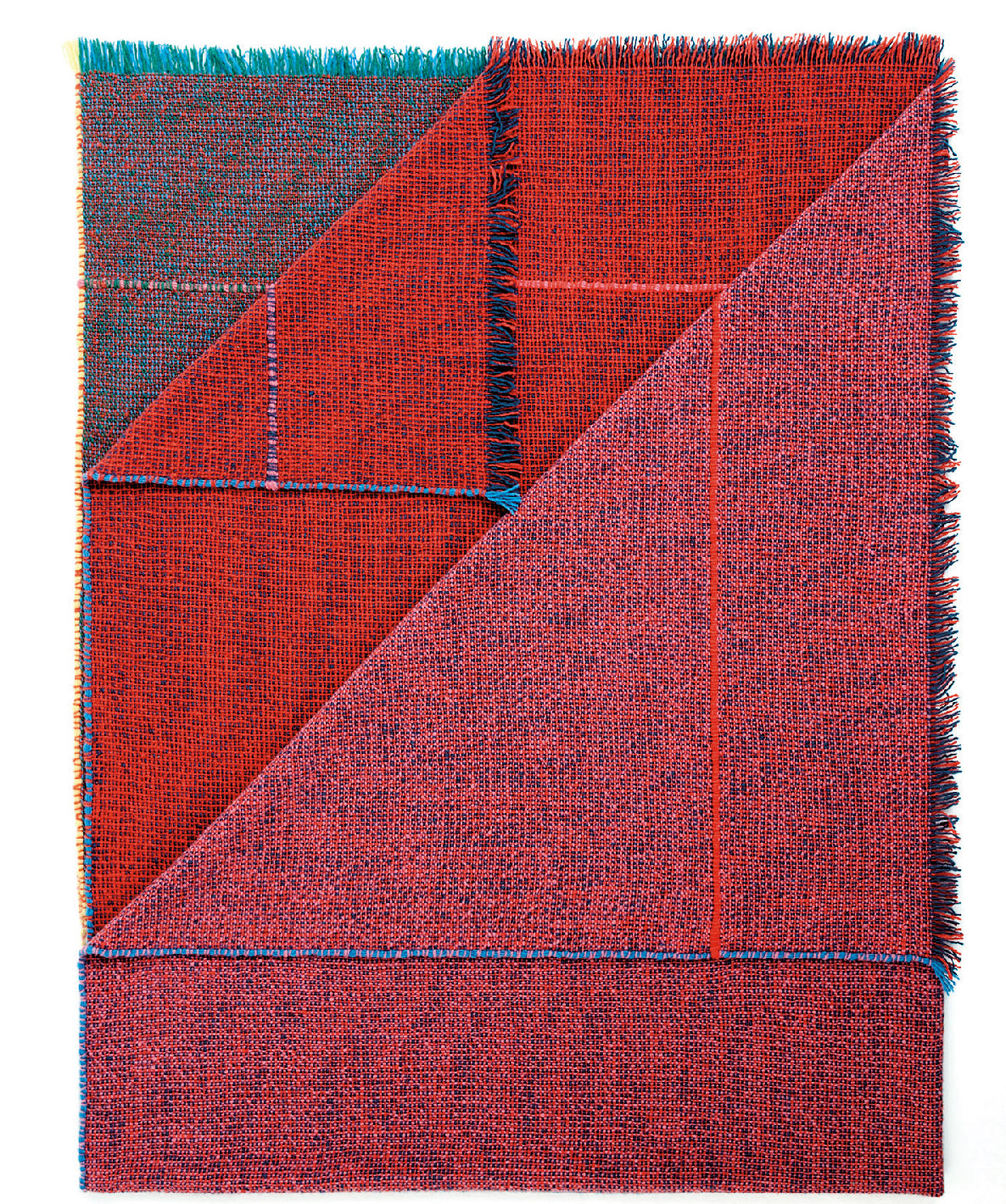Design Space: Ecoalf Store by Nagami
Glacial 3D printed interiors.
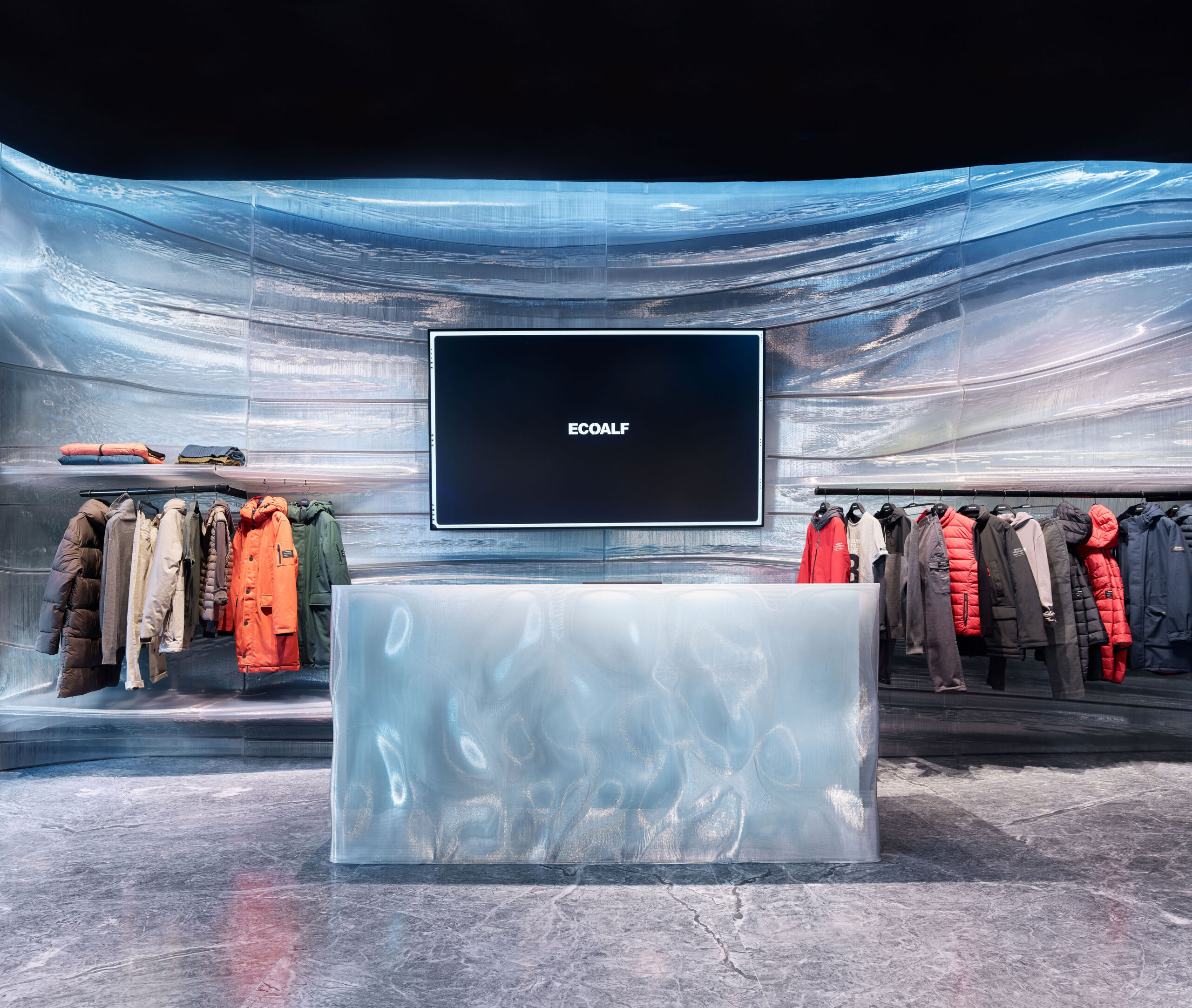
As the climate crisis becomes increasingly dire, designers are finding creative ways to reduce waste without sacrificing appearance. The founders of Nagami, a Spanish tech-first design firm, have it down to an art. The brand uses cutting-edge robotic 3D printing to create sustainable designs and promote a circular economy, turning plastic waste into sculptures, furniture, and interior elements.
One of their most recent projects saw Nagami collaborating with Ecoalf, an eco-friendly clothing brand, on a new store in Madrid. Reducing plastic waste is a goal for Ecoalf, which has developed over 500 recycled fabrics and achieved B Corps Best for the World status last year, so the union was a natural one.
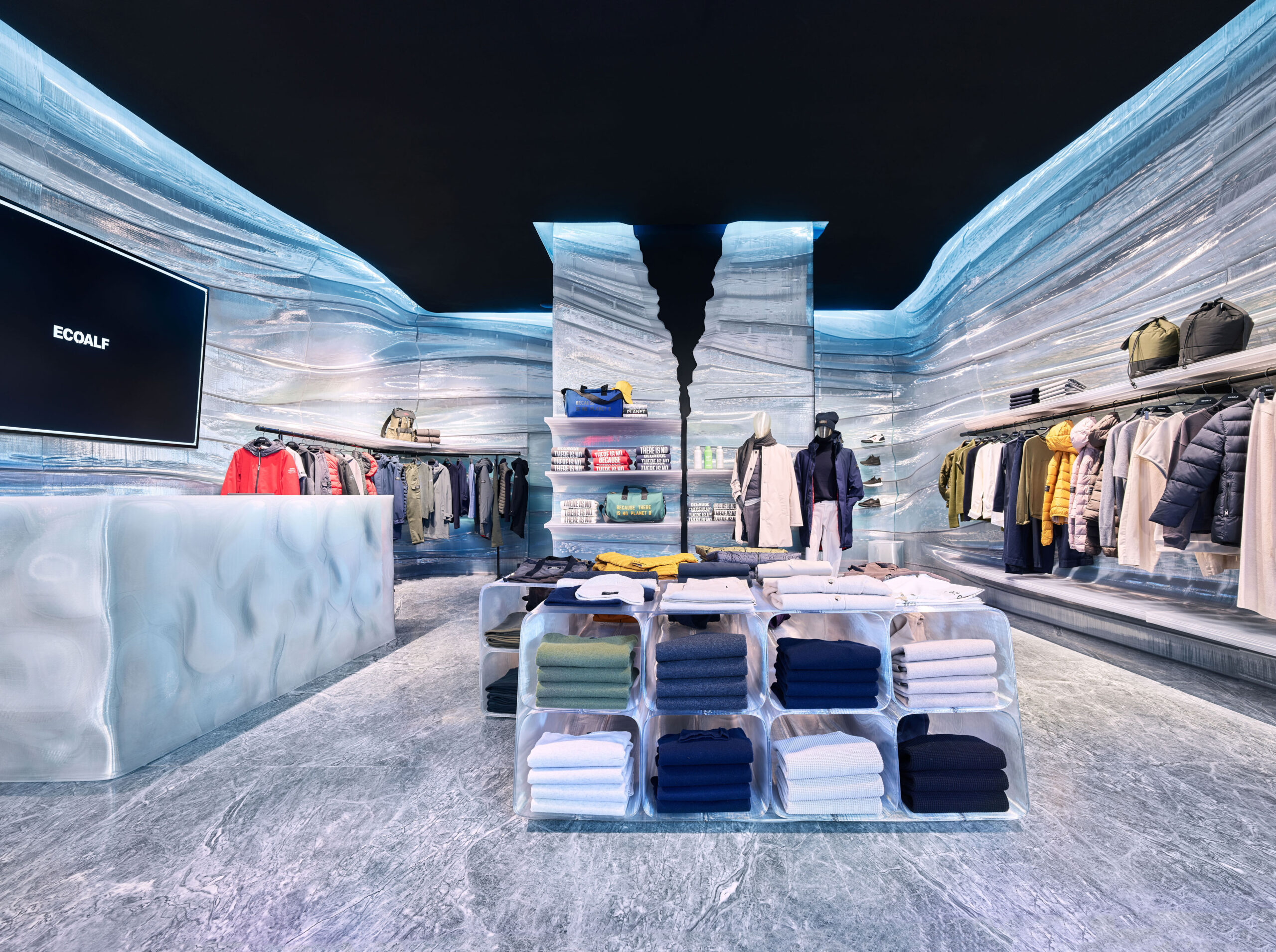
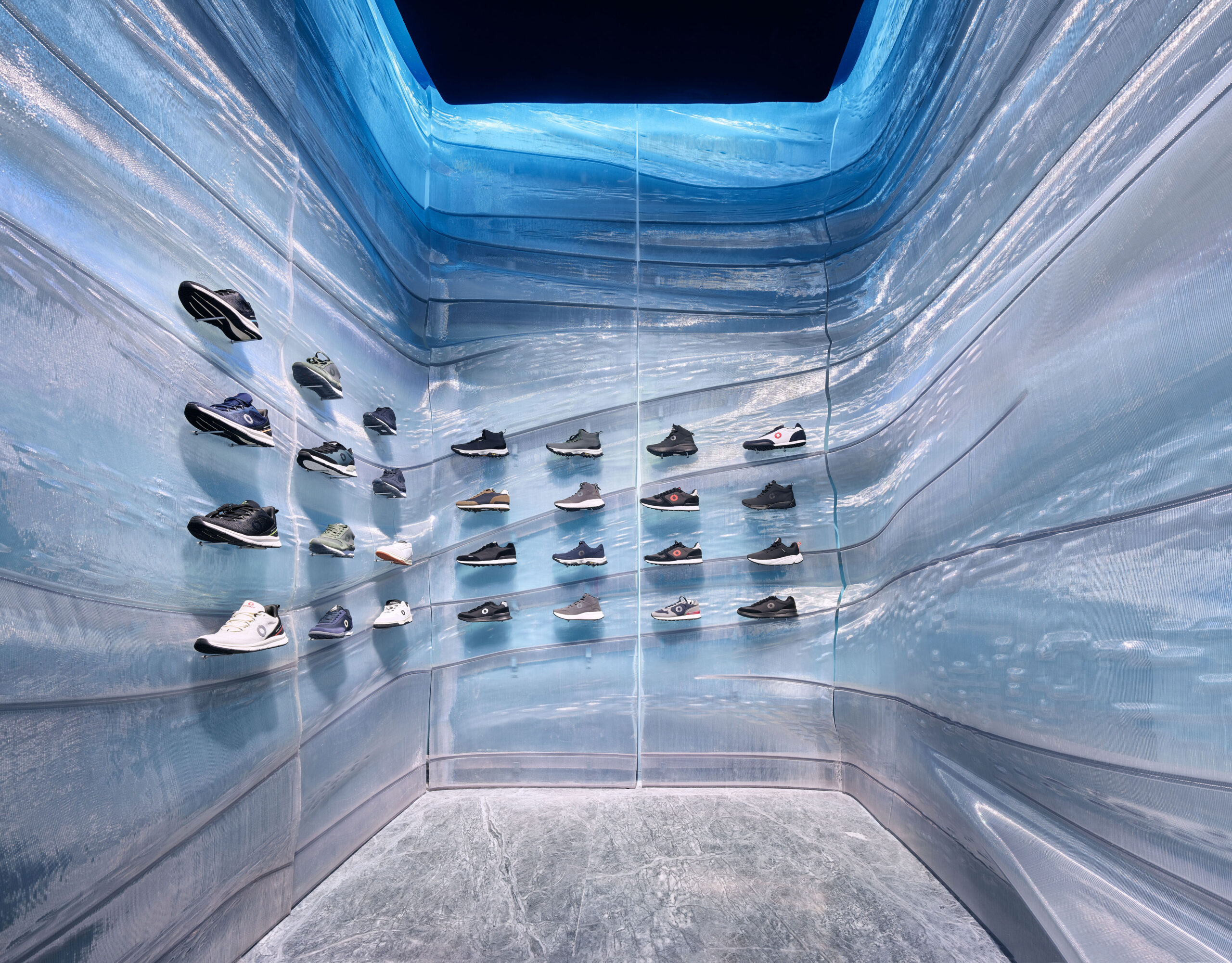
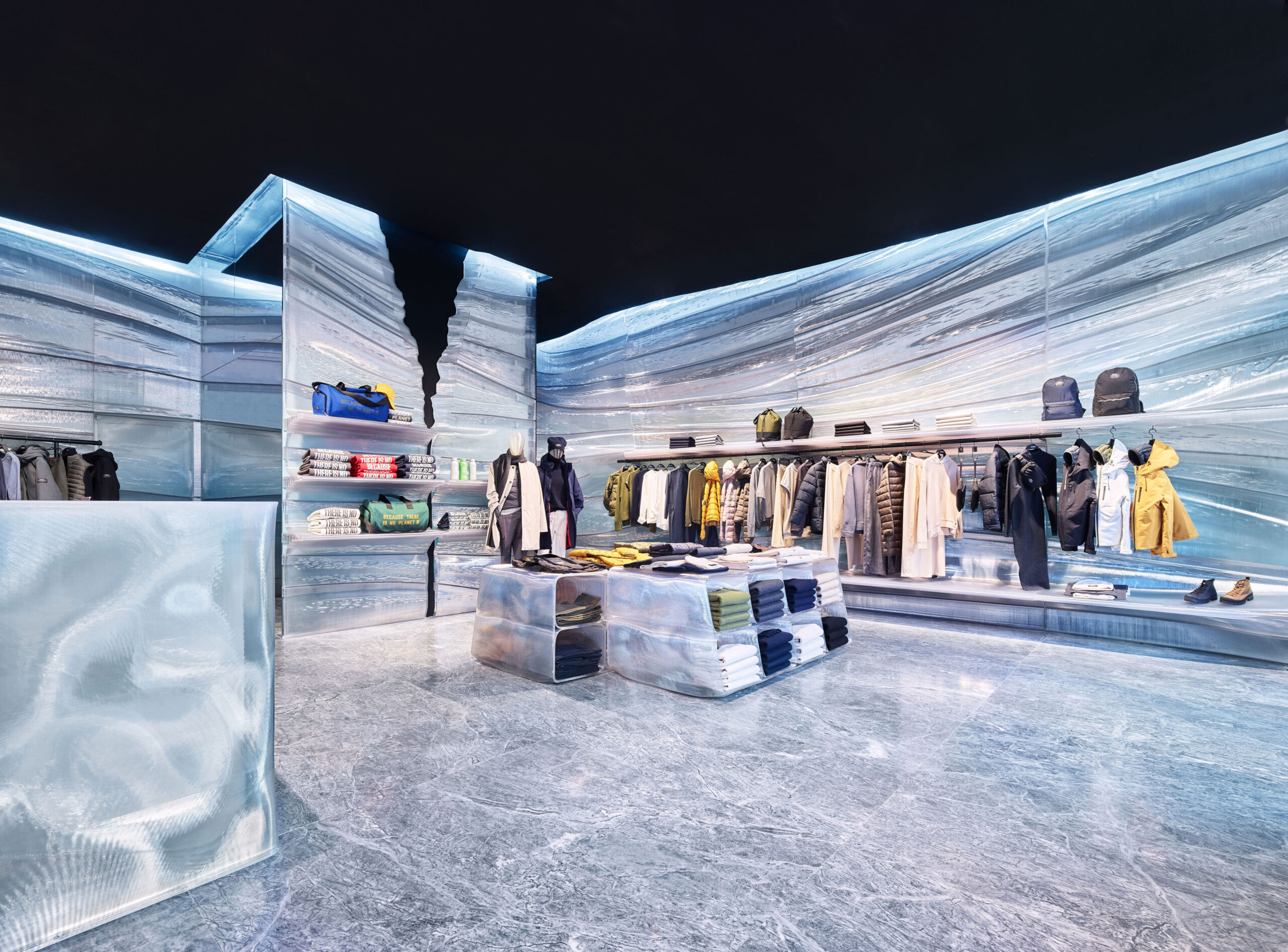
“We urgently need to rethink the way we produce and consume to provoke a real change in the industry,” Nagami co-founder and CEO Manuel Jiménez García says. “Today, 3D printing allows us to bring to life spaces that before were unimaginable, produced locally not only by using recycled materials, but establishing production chains that are cleaner, more sustainable, and flexible. And this is already a reality.”
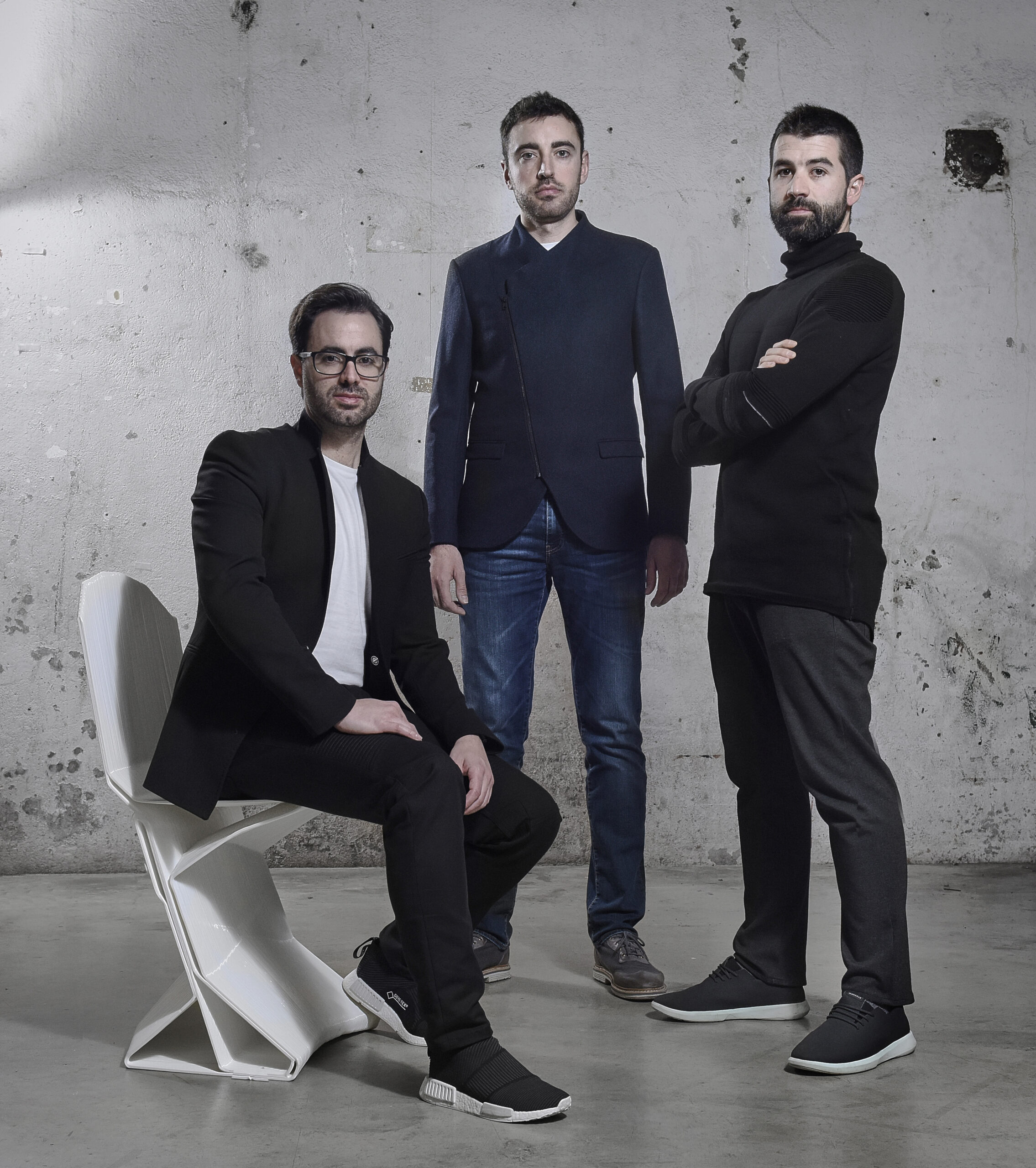
For the retail store, Nagami developed an installation that wraps around the nearly 1,000-square-foot space to display and store products. The silvery blue sculptural shelves, tables, and walls resemble the melting glaciers that inspired them and were printed from 100 per cent recycled plastic, giving new life to 3.3 tonnes of plastic. The main counter looks like a massive block of ice, while smaller stacked ice cubes organize folded clothes. On the walls, firn lines, which mark the transition between ice and snow on a glacier, make visitors feel as if they’ve stepped inside an ice cave. Materials are sourced locally to reduce CO2 emission, and everything can be recycled once it is no longer needed. A poignant and tactile reminder of the fragility of Earth’s ecosystems, the Ecoalf store proves the future of design is recycled.
Photography by Alfonso Quiroga (except 3D printing ones, which are courtesy of Nagami).



